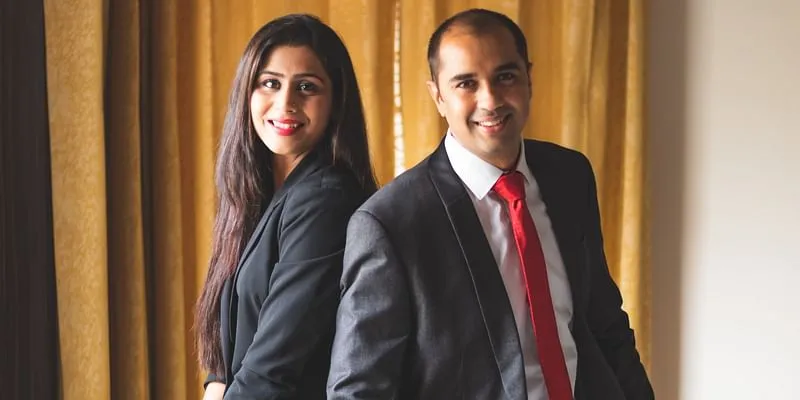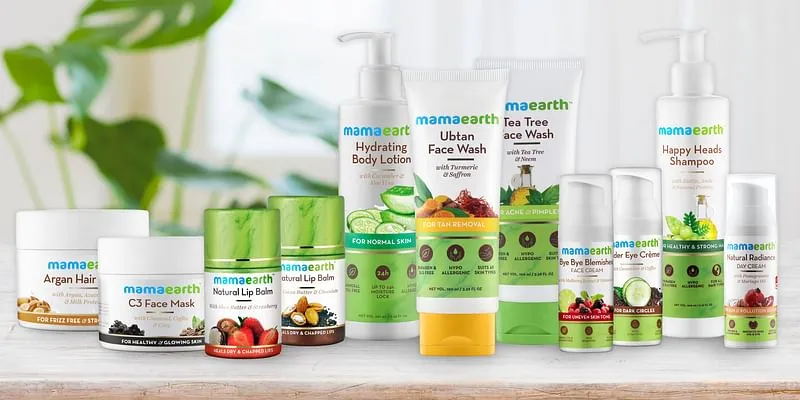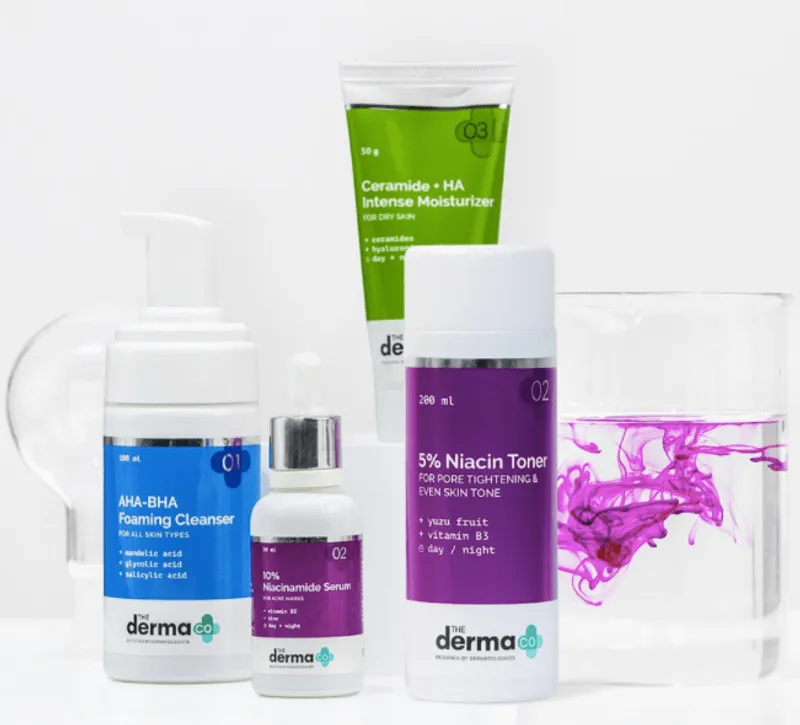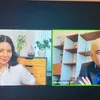Inside Mamaearth: How husband-wife duo Varun and Ghazal Alagh built a profitable Rs 700-Cr D2C sensation
Founded in 2016, D2C personal care brand Mamaearth crossed an ARR of Rs 700 crore this April. What started as a solution to a personal problem is now on its path to becoming a 'house of brands'. Co-founder Ghazal Alagh breaks down the brand’s remarkable journey in an interview with YourStory.
Mamaearth was born out of parental stress. When co-founders and husband-wife duo Varun and Ghazal Alagh were struggling to treat their infant son’s skin condition with products available in the Indian market, they went to the root of the problem.
It turned out that the Indian market was flooded with generic products filled with toxins, and hence, couldn’t be used on infants. While the couple was eventually able to meet their requirement by ordering “suitable” products from the US, which was an “inconvenient arrangement”, they stayed invested in the problem statement.
“It led to us figuring out what was not working right,” Ghazal tells YourStory.
“We found there were certain toxins that were banned in countries outside India and were declared to be harmful to baby skin, but were still being widely used here. And that is what led us to think that somebody should do something about it.”
Further conversations with their friends and family indicated that a lot of parents were not happy with the quality of products available in India.
That is what firmed up the couple’s decision to start a company in this space.
Backed by scientific research, relentless gamma testing with a small focus group of mothers, including Ghazal herself, the couple was ready with six baby products, including lotions, rash creams, shampoos, massage oils, body wash, and diapers.
The mission was simple: To provide natural and toxin-free products for baby skin, and help alleviate the stress of new parents.

Mamaearth's Ghazal Alagh in conversation with YourStory's Shradha Sharma
How the numbers stack up
Mamaearth officially launched in December 2016. In under five years, it has become a D2C sensation, and is one of the fastest-growing brands in India’s FMCG sector.
From six products, it has grown to 140-odd SKUs in baby care, skincare, and haircare segments, and has served more than five million consumers across 500 cities.
Mameartth earns its revenues through its own D2C platform, ecommerce marketplaces like Amazon, Flipkart, and Nykaa, and offline channels.
In FY21, the Gurugram-based startup crossed an annual revenue run rate of Rs 700 crore ($100 million), and is on course to become a Rs 2,000-crore brand in the next three years, according to an analyst report by Jefferies. Even though Mamaearth started with baby care, the vertical contributes only 20 percent to its revenues today while the rest is derived from skincare and haircare.
The company was valued at $730 million during its Series C round of $50 million led by Sofina Ventures in July. Mamaearth also counts marquee investors such as Sequoia Capital India, Fireside Ventures, Stellaris Venture Partners, Sharp Ventures, and Titan Capital as its backers, and has raised nearly $75 million to date.
Many in the startup ecosystem reckon that it could go on to become India’s first D2C unicorn. “There are 62 D2C unicorns globally; India is preparing for its first one. It could be Mamaearth,” one investor told YourStory recently.
In a candid conversation with YourStory Founder and CEO Shradha Sharma, Mamaearth Co-founder and Chief Innovation Officer Ghazal Alagh breaks down the brand’s remarkable journey amidst hyperactivity in the ecommerce space.

Ghazal Alagh and Varun Alagh, Co-founders, Mamaearth
Narrow focus, wide impact
What are the things Mamaearth did right that helped it crack an intensely competitive and largely offline personal care market to become a multi-crore brand in no time?
Ghazal elaborates,
“We looked at if we can solve a problem even for 500 consumers. The process of innovation is actually not as difficult. You can take a production batch as low as 4,000-5,000 units, make it available to consumers, and see the response. Based on that, you can decide how your innovation funnel is going to look like. This is something that gives us the power to innovate faster and cater to niche segments.”
“Through listening tools, we understood what the consumer was looking for, instead of saying ‘look, this is the market size and this is the percent share we’ll get’,” she says.
Listening-based innovation and a consumer-first approach are at the heart of Mamaearth’s success. “This is something that has given us the growth momentum in the past four years. Because consumers understand that this is one brand that is listening to them,” Ghazal says,
“What brands need to focus on is why should the consumer buy from you rather than what should they buy from you?”
For Mamaearth, the ‘why’ was clear from Day One. Today, it is Asia’s only MADE SAFE-certified brand. (It is a non-toxic seal for products in personal care.) And a category leader in the D2C personal care space taking the fight to incumbents.

Mamaearth has grown to over 140 SKUs across baby care, haircare, and skincare
D2C needs 'emotional' connect and personalisation
Mamaearth wants to build a “brand for the parents and by the parents”. It believes that to succeed in the “aggressive” and cluttered D2C space, brands need to build personal connections with consumers to make them choose products for “emotional reasons”.
“Say you’re facing the problem of hair fall. You go online and look for solutions. There are 10 products listed in front of you. But when you see Mamaearth, you know that these are the emotional reasons for which you’ll choose them over others,” Ghazal explains.
These emotional reasons could sometimes mean consumers aligning with Mamaearth’s brand philosophy of recycling plastic (that it uses in its product packaging) and planting trees. The company links every order to a tree it plants on behalf of the customer, and has pledged to plant a million trees by 2025.
“When you’re buying from us, you have the feeling that you’ve given back [to the world]. And we will share the geolocation and species of your plant, so you can actually go to that physical place and see it growing,” Ghazal states.

Baby products contribute 20% to Mamaearth's business today
While conscious consumers are a boon, Mamaearth believes it is equally important to provide buyers with an individual experience to enhance their lifetime value (LTV).
Ghazal explains,
“When customers come directly to your website, you should be able to communicate with them, land messages well, and show them the content they'd like to see. So, if the customer came to buy a hair mask, but also checked out a shampoo and a serum, you know exactly what to talk to them about the next time they come to your website."
"While ecommerce is very good, the possibility of personalisation and meaningful engagement that you have on your own [D2C] channel is great," she adds.
Mamaearth is focusing on increasing the LTV of customers and creating repeat buying behaviour with the help of more listening tools and data analytics. It wants to know “if a consumer comes and buys from us today, when do they come back again?”
Online versus offline distribution
The Sequoia-backed startup makes no bones about the fact that its meteoric rise may not have happened had it looked at offline distribution from Day One.
Ghazal shares, “Offline was not our strength at that time. We believe it is a tricky market to crack even though offline is the main distribution channel for traditional players. But when you're delivering directly to your consumers and interacting with them, you know the potential of online itself is so huge.”
She attributes the challenges in offline retail to the poor discoverability of products.
She says,
“Imagine being on the shelf in a small shop with 500 other brands. How does the consumer focus on you and understand what you have to offer vis-a-vis the other brands? Your brand would just be sitting on the shelf getting closer to expiry dates. So, even if you send 100 products to a store, you’ll get paid for only 10 that get sold. Some traditional brands have a certain self-awareness around them, which naturally gets the consumer to pick them more often.”
Despite the challenges in offline retail, especially post-COVID-19 that led to a breakdown of supply chains, leading to low order fulfilment rates, Mamaearth says it is “definitely looking at an omnichannel play” given the scale it has reached today.
Not only is it expanding to physical retail stores, but it is also looking to grow inorganically by acquiring small brands in the beauty and personal care segment.
“With a certain product-market fit, you’re at a level where you believe that customers are going to come to an offline store and ask for your brand,” Ghazal adds.
The Derma Co. and other innovation
Last year, Mamaearth launched a sister brand The Derma Co. after realising that millennial consumers had started to warm up to expert skincare solutions that could be bought off shelves instead of consulting a dermatologist for every problem. Even though it’s a niche market focused mainly in the metros, it is fast growing.
While Mamaearth’s core portfolio focuses on natural ingredients, The Derma Co. will offer a line of products based on science-based active ingredients.
Its current range includes over 40 products for pigmentation, acne, open pores, and other skin conditions. Customers can also receive skin assessment tests and dermatologist-made skincare regimens.
Ghazal observes,
“Mamaearth is now on a path to become a ‘house of brands’ [Thrasio-style] where we will make special skincare products available in the regular beauty market. Active ingredients were a whitespace we identified for The Derma Co., and we wanted to provide value to consumers at affordable prices.”
Mamaearth’s goal is to make The Derma Co. a Rs 100-crore brand by the end of FY22. It is also pushing offline expansion for its own products, and aims to reach 30,000 physical retail touchpoints over the next one year.

Mamaearth wants to make The Derma Co. a 100-crore brand by FY22
The co-founder goes on to share, “Our initial goal when we started Mamaearth was to build a Rs 100-crore business. But when we reached there, we started thinking of what to do next, instead of celebrating. How could we double and triple the business and become a Rs 1,000-crore brand in the next two to three years.”
However, Ghazal notes, these are just numbers. "For us, satisfaction comes from emotional statements from consumers like ‘you have changed my life with this product’ or ‘my entire family is using your brand’,” she says.
She further reveals that “going public is the next milestone” for the company. But a lot of hard work and scaling up has to be done before that. The brand has also started catering to international markets, mainly neighbouring countries like Bangladesh and Nepal, where people are already exposed to Indian brands and media.
“There’s genuine interest coming in, and we are catering to them, rather than us specifically focusing [on those markets]. India still has so much more potential for us. There are so many more households that we have to reach,” Ghazal says.
The competitive D2C landscape
Riding on pandemic-led tailwinds in online commerce, and changing consumer behaviour, India’s D2C space has exploded in the last 12-15 months. It is estimated to become a $100-billion market by 2025, according to a report by Avendus.
Ghazal believes the space “is on fire today” compared to four to five years ago when there were just a handful of brands alongside Mamaearth.

India's D2C market is expected to be worth $100 billion by 2025
“The way things are shaping up today, I think less meaningful brands are also getting higher valuations purely because of the aggression. Every investor has this FOMO that ‘Oh my God, if I don't invest in this, I'll miss out.’ So, these are the three brands and there are six investors who want to invest in them,” she states.
Mamearth’s key competitors include WOW Skin Science, Body Cupid, SkinKraft, Juicy Chemistry, and Plum, among others. The D2C beauty and personal care segment is projected to be worth $28 billion by 2025, as per Avendus.
Despite Mamaearth’s category-leading success, the founders are often haunted by a fear of failure. “There is a constant fear of what if [something’s] not right. When we started, that fear was much less; we were more open to experimentation. With growth, the fear of failure also increases — the fear of not being innovative enough or fast enough when you look at the competition,” Ghazal shares.
“There are two ways to deal with this fear: Darr ke baith jao and play safe or play on the front foot,” she says.
And that's what Mamearth has been doing successfully — playing on the front foot.
Edited by Saheli Sen Gupta













